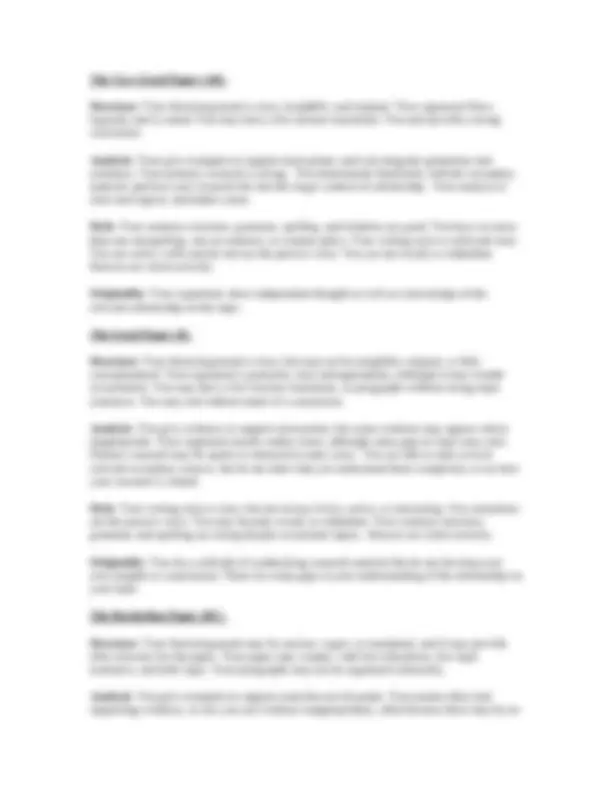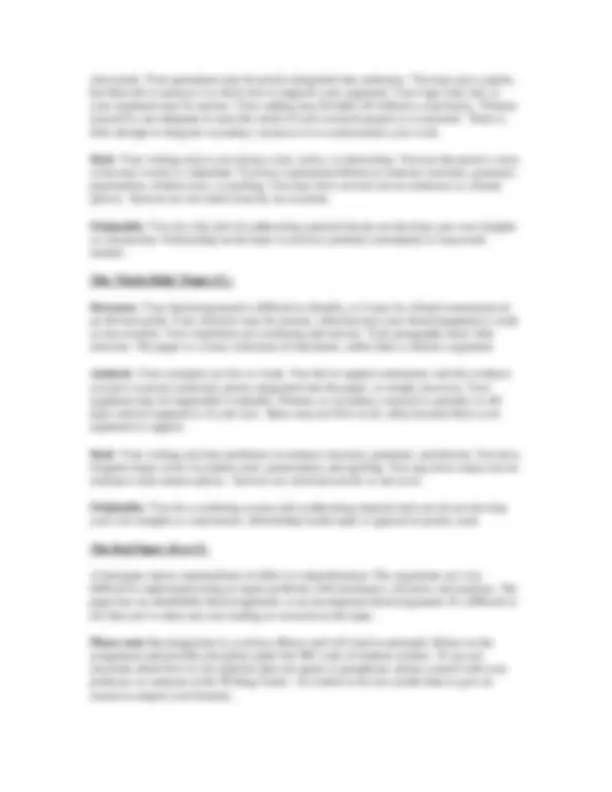




Study with the several resources on Docsity

Earn points by helping other students or get them with a premium plan


Prepare for your exams
Study with the several resources on Docsity

Earn points to download
Earn points by helping other students or get them with a premium plan
Community
Ask the community for help and clear up your study doubts
Discover the best universities in your country according to Docsity users
Free resources
Download our free guides on studying techniques, anxiety management strategies, and thesis advice from Docsity tutors
A research paper assignment for jmc 455/555 students, requiring them to write about a topic related to the depiction of race and/or gender or the analysis of race/gender discourse in american mass media culture. Students must choose a specific text, such as a film, television series, or advertising campaign, and use it as a case study to examine the production and dissemination of gendered or racialized messages. The paper should include a descriptive portion, a review of relevant scholarship, and an analysis of the cultural work of the chosen text.
Typology: Papers
1 / 4

This page cannot be seen from the preview
Don't miss anything!



Spring 2009
Research Paper Assignment
Students in JMC 455/555 are required to write a research paper that explores a topic related to the depiction of race and/or gender or the analysis of race/gender discourse in American mass media culture. Each student should choose a particular “text” (a film, a television series, an advertising campaign, a set of related photographs, news reports on a specific event, etc.) and use it as a case study that interrogates the production and dissemination of gendered or racialized messages in our culture. Topics can be historical or contemporary and they can come from news, entertainment, advertising, or any other media presentation. The goal of the paper is to look beyond the most obvious meaning and examine and discuss the various ways the text can be “read” as a cultural product in relation to other things happening in our history or culture.
Paper topics must be discussed with and approved by the professor. A one paragraph topic proposal that gives a brief plan of action is due in class on April 1.
The papers should contain several parts. The first section is a description of the chosen text that explains some of its basic components, features, and cultural or historical context. Assume the reader is not familiar with the topic and provide background information so the analytical portion of the paper will make sense. Who created or produced it? What is it for? What is it about? Who is the audience? Was/is it popular? Controversial? The descriptive portion of the paper should not exceed two pages. It is acceptable, but not necessary, to append illustrations, program transcripts, photocopies, video or audio clips, or other supplemental material that you believe might be helpful. These should be clearly labeled and included in a convenient format outside of the text of the paper.
The second part of the paper looks at the relevant scholarship on the subject. Find academic publications that discuss your topic or something very similar. The reading assignments for this class (and their reference lists) are a good place to start. The scholarly literature on popular culture topics is surprisingly large and it is likely that you can find an academic analysis (or even a vigorous scholarly debate) related to the subject you have chosen. Read these studies to get ideas about how scholars approach the topic. Your paper should contain several paragraphs that discuss these different scholarly approaches; ideally this section of the paper will also explain how your work differs from previous work and adds something new to the conversation about the subject.
The final, and most significant, part of the paper includes your analysis of the cultural work of the text you have chosen. Think carefully about different ways that your text can be interpreted to create different kinds of meaning or about various ways that people respond to the discourse you are studying. Look for ways to link different interpretations/responses to broader trends or events in popular culture, history, or political life. What effects do these representations or frameworks have on notions of identity or belonging, for example. Or, how might they be used to reinforce dominant ideologies or, conversely, mobilize an alternative movement.
A good paper will put forward a thoughtful argument, supported both by specific examples drawn from the text and ideas you pick up from your reading of the scholarly literature on the subject. Remember, there is usually not one “right” way to interpret mediated messages, so be creative while staying within the bounds of an argument you can sustain with evidence.
There is no minimum required number, but it is necessary to consult a range of relevant and useful sources to do well on this assignment; scholarly rigor is a component of your grade. Your paper should include full citations for all quotations or paraphrased material, as well as ideas drawn from the work of others. Footnotes or endnotes prepared according to the Chicago Manual of Style are the preferred method of citation, but APA style is also acceptable. In addition to citations, an annotated bibliography must be included with your paper. Annotations should be 2-3 sentence descriptions of each source used that explain how it was useful/relevant for the project.
Undergraduate papers must be 8 pages minimum; graduate papers must be at least 15 pages. Graduate students will also give a 10 minute oral presentation based on their research papers during the final exam session on May 6. Papers will be graded based on both content and writing style. Please look carefully at the assignment grading criteria to understand how your papers will be evaluated. Include a cover sheet but do not put your paper in a binder or report cover. Pages should be numbered starting with the first page of text.
Papers are due on April 22 at the beginning of class. A copy should be sent to the professor by e-mail before class starts that day. Late papers will be docked 3 points per day. The papers are worth 30% of the course grade
Grading Criteria
The Superior Paper (A)
Structure : Your thesis/argument is clear, insightful, original, and sophisticated. All ideas in the paper flow logically; your argument is identifiable, reasonable, and sound. You have excellent transitions. Your paragraphs have solid topic sentences, and each sentence clearly related to that topic sentence. Your conclusion is persuasive.
Analysis : You support every point with at least one example from your primary sources. You integrate quoted material into your sentences well. You convey a solid understanding of the secondary material on the topic and relate your research clearly to the pertinent secondary sources. Your analysis is fresh and exciting, posing new ways to think about the material.
Style : Your sentence structure, grammar, spelling, and citations are excellent. You have NO spelling or punctuation errors, run-on sentences, or comma splices and your writing style is lively, active, and interesting. You use active verbs, and do not use the passive voice. You are not wordy or redundant. Sources are cited correctly.
Originality : Your arguments show a great deal of independent insight and originality, as well as a thorough knowledge of the relevant scholarship on the topic.
clear point. Your quotations may be poorly integrated into sentences. You may give a quote, but then fail to analyze it or show how it supports your argument. Your logic may fail, or your argument may be unclear. Your ending may dwindle off without a conclusion. Primary research is not adequate to meet the needs of your research project or is misused. There is little attempt to integrate secondary resources or to contextualize your work.
Style : Your writing style is not always clear, active, or interesting. You use the passive voice, or become wordy or redundant. You have repeated problems in sentence structure, grammar, punctuation, citation style, or spelling. You may have several run-on sentences or comma splices. Sources are not cited correctly on occasion.
Originality : You do a fair job of synthesizing material but do not develop your own insights or conclusions. Scholarship on the topic is used in a partially incomplete or inaccurate manner.
The “Needs Help” Paper (C)
Structure : Your thesis/argument is difficult to identify, or it may be a bland restatement of an obvious point. Your structure may be unclear, often because your thesis/argument is weak or non-existent. Your transitions are confusing and unclear. Your paragraphs show little structure. The paper is a loose collection of statements, rather than a cohesive argument.
Analysis : Your examples are few or weak. You fail to support statements, and the evidence you give is poorly analyzed, poorly integrated into the paper, or simply incorrect. Your argument may be impossible to identify. Primary or secondary research is sporadic or off- topic and not supportive of your text. Ideas may not flow at all, often because there is no argument to support.
Style : Your writing style has problems in sentence structure, grammar, and diction. You have frequent major errors in citation style, punctuation, and spelling. You may have many run-on sentences and comma splices. Sources are cited incorrectly or not at all.
Originality : You do a confusing or poor job synthesizing material and you do not develop your own insights or conclusions. Scholarship on the topic is ignored or poorly used.
The Bad Paper (D or F)
A bad paper shows minimal/lack of effort or comprehension. The arguments are very difficult to understand owing to major problems with mechanics, structure, and analysis. The paper has no identifiable thesis/argument, or an incompetent thesis/argument. It’s difficult to tell that you’ve done any real reading or research on the topic.
Please note that plagiarism is a serious offence and will lead to automatic failure on the assignment and possibly discipline under the MU code of student conduct. If you are uncertain about how to cite material that you quote or paraphrase, please consult with your professor or someone at the Writing Center. It is better to be too careful than to give us reason to suspect your honesty.